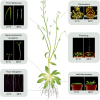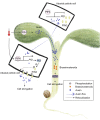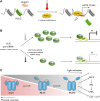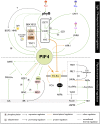Developmental Plasticity at High Temperature
- PMID: 31363006
- PMCID: PMC6776856
- DOI: 10.1104/pp.19.00652
Developmental Plasticity at High Temperature
Abstract
Molecular mechanisms controlling the thermal response in Arabidopsis.
Figures






References
Publication types
MeSH terms
Substances
LinkOut - more resources
Full Text Sources

